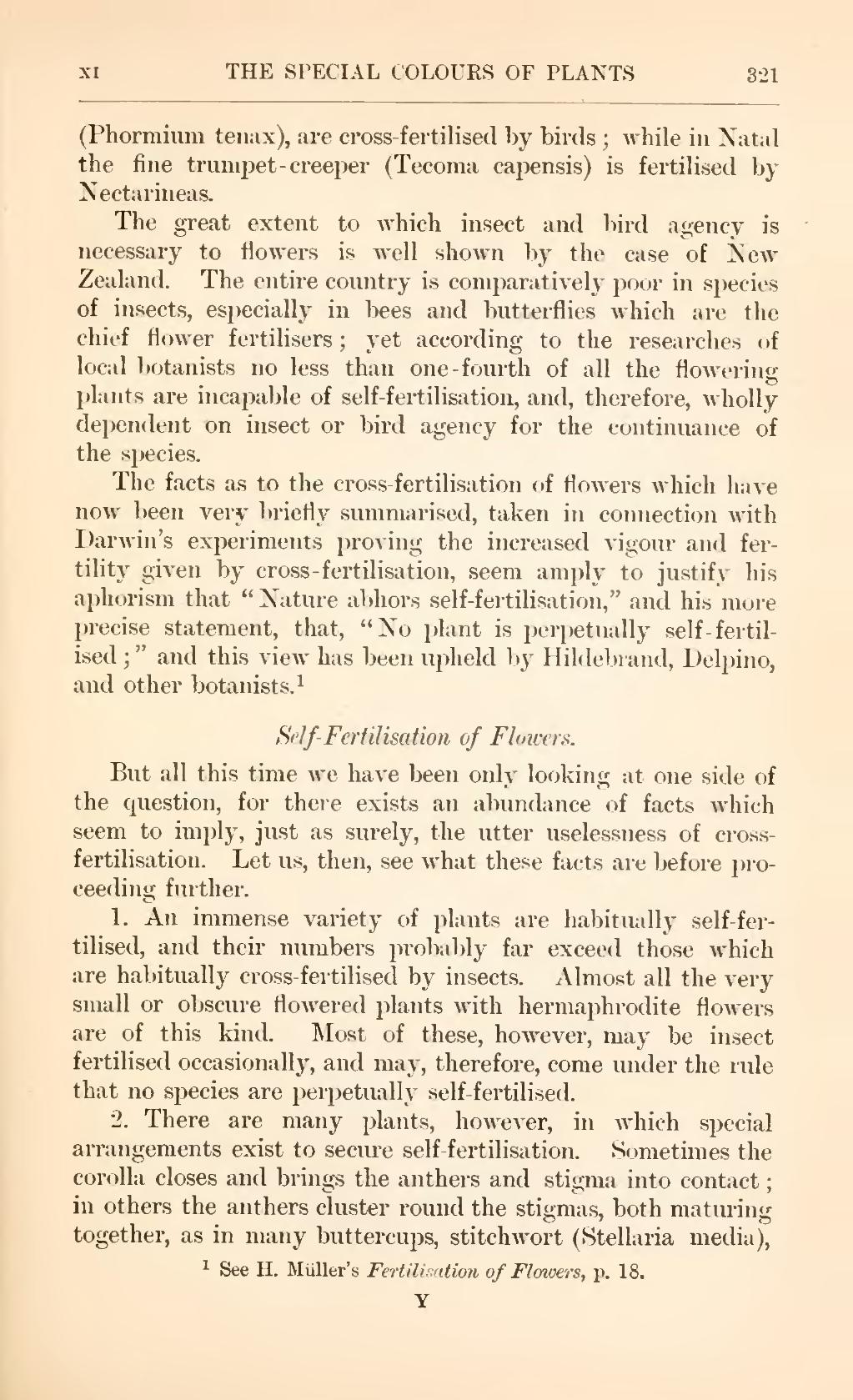(Phormium tenax), are cross-fertilised by birds; while in Natal the fine trumpet-creeper (Tecoma capensis) is fertilised by Nectarineas.
The great extent to which insect and bird agency is necessary to flowers is well shown by the case of New Zealand. The entire country is comparatively poor in species of insects, especially in bees and butterflies which are the chief flower fertilisers; yet according to the researches of local botanists no less than one-fourth of all the flowering plants are incapable of self-fertilisation, and, therefore, wholly dependent on insect or bird agency for the continuance of the species.
The facts as to the cross-fertilisation of flowers which have now been very briefly summarised, taken in connection with Darwin's experiments proving the increased vigour and fertility given by cross-fertilisation, seem amply to justify his aphorism that "Nature abhors self-fertilisation," and his more precise statement, that, "No plant is perpetually self-fertilised;" and this view has been upheld by Hildebrand, Delpino, and other botanists.[1]
Self-Fertilisation of Flowers.
But all this time we have been only looking at one side of the question, for there exists an abundance of facts which seem to imply, just as surely, the utter uselessness of cross-fertilisation. Let us, then, see what these facts are before proceeding further.
1. An immense variety of plants are habitually self-fertilised, and their numbers probably far exceed those which are habitually cross-fertilised by insects. Almost all the very small or obscure flowered plants with hermaphrodite flowers are of this kind. Most of these, however, may be insect fertilised occasionally, and may, therefore, come under the rule that no species are perpetually self-fertilised.
2. There are many plants, however, in which special arrangements exist to secure self-fertilisation. Sometimes the corolla closes and brings the anthers and stigma into contact; in others the anthers cluster round the stigmas, both maturing together, as in many buttercups, stitchwort (Stellaria media),
- ↑ See H. Müller's Fertilisation of Flowers, p. 18.
